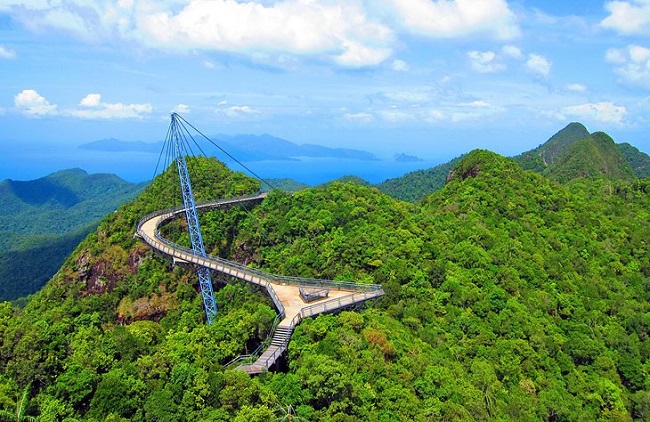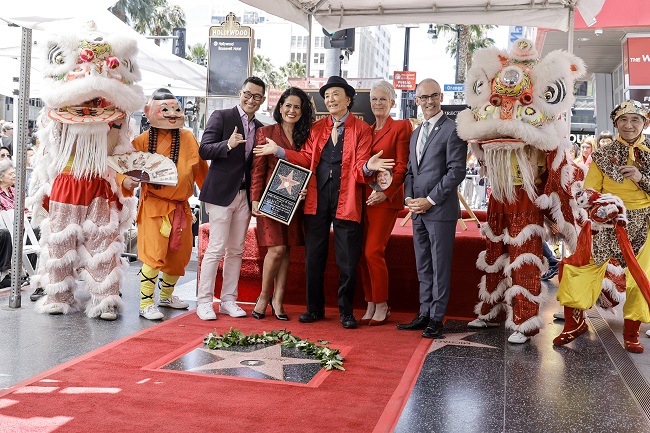If there were prizes given to countries based on their variety, Malaysia would win hands down. Malaysia is home to people of many various backgrounds, and the country’s customs, cuisine, and religious practises reflect this diversity.
The country’s topography is just as varied, featuring everything from enormous island chains to mountains, rich highlands, and tropical rainforest.
Top 10 Places to Visit in Malaysia

Malaysia is also unusual in that it consists of two distinct landmasses. East Malaysia, on the island of Borneo, is located across the South China Sea from West Malaysia, which occupies the southern half of a peninsula shared with Thailand.
This guide to the top tourist destinations in Malaysia highlights cultural, historic, and natural sights. Check out the top island in Malaysia to learn more about the best islands and beaches in the country.
1. Sipadan
Sipadan is Malaysia’s only oceanic island, and it can be found in the Celebes Sea, off the coast of Borneo. Scuba divers flock there to explore one of the world’s richest marine environments, which was formed over millennia from living coral reefs.
Divers can choose from a dizzying variety of dives, some of which lead them through ethereal underwater tunnels and caverns, while others take them past sheer coral cliffs and whirling shoals of fish.
Sea turtles, hammerhead sharks, and manta rays are just some of the marine creatures that may be seen swimming about the island. The island’s stunning beaches and undersea riches have been protected since 2004, thus the only way to get it is by boat from the neighbouring islands of Mabul and Kapalai.
Formerly a point of contention between Malaysia and Indonesia, Sipadan is now widely recognised as one of the world’s premier scuba diving locations.
2. Melaka
Melaka, located on the southern coast of West Malaysia, was fought over by the Indian, Portuguese, British, and Dutch for control of this strategic location for hundreds of years. This modern Malaysian city is currently a hotspot for tourists because it retains so much of its historic character in the form of buildings, cultural practises, and culinary specialties.
Melaka is known as a place where many different cultures come together, and its many different neighbourhoods each have their own special charms. The Portuguese Settlement is home to picturesque mansions, ancient churches, and the foundations of a once-powerful fort.
The Cheng Hoon Teng Temple, the oldest Chinese temple in Malaysia, and one of the largest Chinese cemeteries outside of China may both be found in the Chinese Neighbourhood.
Some of the oldest examples of Dutch architecture in the East can be found in the Dutch quarter. In addition, celebrations like the Chinese New Year and the Portuguese “Intrudu” can be found in each cultural zone.
3. Cameron Highlands
The Cameron Highlands in the Titiwangsa Mountains are one of the oldest tourist destinations in Malaysia, and with good reason. Beautiful flower farms, tea plantations, woodlands, lakes, animals, and outdoor enjoyment may all be found on this tableland that was designed to evoke an English garden.
Despite their physical separation, the area is dotted with a number of villages and communities that provide amenities like hotels, vibrant marketplaces, and museums like the Time Tunnel Gallery, which chronicles the people, culture, and history of the Camerons.
Brinchang and Tanah Rata are the most well-known of these municipalities. The Cameron Highlands are home to the majority of Malaysia’s vegetable farms, fruit orchards, butterfly gardens, and honey bee farms, as well as the country’s largest tea plantations and flower gardens.
The public can enter several of these businesses. There are a number of picturesque courses for golfers to choose from.
The Mossy Forest offers a walkway through unspoilt trees and plants and sightings of birds, animals, reptiles, and insects, while a drive up Malaysia’s highest peak, Mount Brinchang, provides stunning vistas. Hikers can access stunning waterfalls and vantage points by following well-marked jungle trails.
4. Kota Kinabalu
Kota Kinabalu, the capital of Sabah State on Malaysian Borneo, is becoming increasingly popular with tourists as a result of its location near a number of attractions, including islands, rainforests, wildlife sanctuaries, national parks, and the country’s highest peak, Mount Kinabalu.
Kota Kinabalu, or KK as the locals call it, features a compact downtown area with a variety of notable buildings, including memorials and an observatory with breathtaking panoramas of the area.
You can see wildlife like proboscis monkeys, tigers, orangutans, and elephants, as well as engage in outdoor activities like camping, jungle trekking, mountain climbing, whitewater rafting, and river cruises, all without leaving the city limits of KK at Lok Kawi Wildlife Park, Kota Kinabalu Wetland Centre, and Kinabalu National Park.
Minutes from the city, in Tunku Abdul Rahman Park, you’ll find five charming islands just waiting to be explored by sailor, swimmer, or diver. If you want to learn about the history and customs of the Kadazan indigenous tribe and witness the trophy skulls claimed by a legendary warrior more than 300 years ago, a trip to the Monsopiad Cultural Village is in order.
5. Perhentian Islands
A small series of stunning islands, the Perhentians may be found off the coast of northeastern Malaysia, not too far from the Thai border. Great Perhentian (Perhentian Besar) and Little Perhentian (Perhentian Kecil) are the two largest islands.
Kecil is more popular with tourists because of its more affordable lodging options, whereas Besar is favoured by families and those hoping to avoid the backpacker party scene due to its higher prices. The waters around the Perhentian Islands are perfect for scuba diving and snorkelling.
The Perhentians are not only rich in coral and fish, but also in sea turtles and various species of shark. Be prepared to sweat and swat away bugs if you decide to take on any of the islands’ many little roads that lead from one beach to another.
The Perhentian Islands don’t have a lot of high-end hotels. Chalets with air conditioning are the most luxurious option, while a bunk in a longhouse is the most basic. Off-season is a good time to find deals, although weekends and holidays tend to be when the best hotels book up quickly.
6. Kuching
Kuching, the largest city on Borneo Island, is a popular starting point for trips into the surrounding rainforest and the state of Sarawak. Kuching, on the other hand, has a plethora of attractions for visitors, including as museums, monuments, marketplaces, and parks.
Skyscrapers and contemporary buildings in Kuching stand out against the backdrop of dense jungle because of this juxtaposition. The city is located on the Sarawak River, and its riverfront is manicured nicely, providing excellent views of both historic sites like Fort Margherita and Astana Palace, and cutting-edge modern architecture like the DUN complex.
Food stalls, a musical fountain, an observation tower, an open-air theatre, and several river boat companies can all be found along the bustling waterfront. Kuching’s oldest street, Main Bazaar, is filled with antique and handicraft businesses, as well as ancient Chinese temples.
Several museums showcase local art and history, and an aquarium showcases Sarawak River fish species. The Kuching Civic Center, easily recognisable by its distinctive umbrella-shaped roof, is home to a planetarium and a viewing platform with breathtaking bird’s-eye views.
Lakes, waterfalls, and outdoor pursuits like hiking, horseback riding, and cave exploring can be found in the adjacent national parks and in the picturesque gardens that surround them.
7. Penang
Off the northwest coast of West Malaysia, in the Strait of Malacca, is Penang Island, a famous tourist destination known for its ancient George Town and varied cuisine. Penang has been influenced by a wide variety of civilizations, architectural styles, and culinary traditions due to its location on a major trade route.
Penang Island has many sights worth seeing, including the Botanic Gardens, Bird Sanctuary, Butterfly Park, and the white sand beaches of Batu Ferringhi on the island’s northern shore, all of which can be reached by automobile or the island’s public bus system.
The island is dotted with temples, the most notable being the Snake Temple, home to venomous snakes, and the massive Temple of Ultimate Bliss. Jerejak Island, located off the southeast coast of Penang, was once used as a leper and penal colony but is now a tropical paradise offering outdoor adventure and spa and pampering facilities.
Take a trishaw ride or walk about George Town, the capital of Penang, to explore the city’s historic Chinese and Indian temples and British colonial buildings. George Town also features numerous shops, eateries, and nightclubs.
Little India, a neighbourhood rich with fragrant spices and energetic Bollywood music, is another must-see. Penang is widely considered as Malaysia’s food capital, and its cuisine is well-known for its eclectic blend of flavours from around the world.
Char Koay Teow, a stir-fried meal of rice noodles, cockles, and bean sprouts, is a local specialty, and is available from vendors on the street or at luxury seafood restaurants.
8. Kuala Lumpur
Until recently (less than 200 years ago), Kuala Lumpur was a sleepy West Malaysian tin mining town. The once quiet town now serves as the country’s federal capital and largest city. KL, as the locals call it, is a thriving metropolis known for its magnificent skyscrapers and thriving shopping, food, and nightlife sectors. KL is one of the world’s biggest cities that offers reasonable prices for tourists.
Heavy traffic is a problem in Kuala Lumpur, as it is in many other major cities, hence the monorail is the most efficient way to get around. Tourist attractions in Kuala Lumpur range from the Old City’s historic landmarks and British colonial structures to the modern district’s iconic Petronas Twin Towers and Chinatown’s colourful street vendors.
9. Taman Negara
Taman Negara, located in the northern region of West Malaysia, spans three states and is often considered to be the world’s oldest tropical rainforest. This national park is a hotspot for ecotourists and adventurers due to its abundance of unique flora and fauna, including the critically endangered Malayan tiger, Asian elephant, and Sumatran rhinoceros.
The village of Kuala Tahan, just across the river from Taman Negara’s administration building, serves as the main point of entry for the park’s many tourists. Trips into the jungle and beyond can be planned from the information centre.
Activities like hiking, fishing, and cave exploring provide thrilling ways to explore the park’s natural wonders. Canopy Walk, a long suspension bridge high above the treetops where tourists can walk and see rare birds, is one of the most popular things to do in Taman Negara.
Night-blooming plants, glow-in-the-dark mushrooms, and nocturnal animals like owls, leopard cats, and water dragons can all be seen on guided night safaris. Rare birds, wild boars, and breathtaking vistas can all be found at the top of Teresek Hill.
Learn about the culture and survival practises of the Orang Asli people by paying a visit to their villages. Kula Tahan’s riverbank is home to a number of floating restaurants that should not be missed.
10. Gunung Mulu National Park
The limestone karst formations and magnificent cave systems at Gunung Mulu National Park make it one of Southeast Asia’s top tourist destinations. The cave systems in this national park in the Sarawak State of Malaysian Borneo are among the largest and longest in the world.
The Sarawak Chamber is the largest known cave chamber, with a volume that can accommodate 40 Boeing 747s. The park’s other notable features include the Pinnacles, a concentration of pointed, limestone spires; a karst sinkhole known as the Garden of Eden; and two majestic peaks, Gunung Mulu and Gunung Api, all of which are nestled among rainforest, crystal-clear rivers, rugged mountains, and deep ravines.
Several different kinds of birds, mammals, and reptiles call the park their home, including hornbills, bats, gibbons, barking deer, and bearded pigs. The world’s longest canopy walk is located here, making it a popular attraction alongside guided cave tours and trekking.
Owing of its isolated location, Gunung Mulu National Park is best reached via flight into Mulu Airport. It is also possible to go by road, boat, and foot from Miri, however this can take several long days. Travel and hotel arrangements have been made with tour leaders.

























